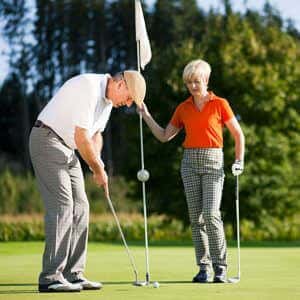
Many studies have shown that moderate to vigorous exercise can help ward off heart attacks and strokes in middle-aged people. Now research shows that older women also benefit if they are active in their daily lives (Journal of the American Heart Association, Feb. 22, 2022). No gym membership is necessary.
How Can Older Women Avoid Heart Attacks and Strokes?
This study included participants in the Women’s Health Study. They were 59 to 70 years old when they joined the WHI in the mid-1990s. By 2012, more than 5,000 of these women were still free of cardiovascular disease. As a result, the researchers invited them to join the Objective Physical Activity and Cardiovascular Health (OPACH) part of the study.
The volunteers wore an accelerometer for a week at some point between 2012 and 2014. The researchers then monitored them for cardiovascular events such as angina, heart attacks and strokes through February 2020. Women who kept active by gardening, walking or doing household chores such as cleaning or cooking were less likely than sedentary women to experience a cardiovascular event.
The authors conclude:
“Describing the beneficial associations of physical activity in terms of common behaviors could help older adults accumulate physical activity.”
This is not the first study demonstrating that older people benefit from regular physical activity. You don’t have to be a runner to keep your heart in shape.
Walking Reduces the Risk of Heart Attacks and Strokes:
A ten-year study of older Americans shows that those who are physically active have a lower risk of heart attacks and strokes (Circulation, online Nov. 4, 2015). The study included more than 4,000 men and women whose average age at the beginning of the study was 73 years old.
Those who walked faster than three miles an hour were only half as likely to develop heart disease or a stroke as those who ambled slower than two miles an hour. The researchers found that those walking seven blocks a day or so cut their risk of stroke or cardiovascular disease by around 50 percent compared to people who walked five blocks or fewer a week.
Having Fun Can Help the Heart:
Active leisure activities such as yard work, swimming, biking or hiking were also protective against heart attacks and strokes.
The lead author noted:
“Our study of older Americans shows that, even late in life, moderate physical activity such as walking is linked to lower incidence of cardiovascular disease.”
One of the highlights of the study is that even people who were 75 or older at the beginning of it (and thus 85 or above by the time it ended) got protection from heart attacks and strokes by being active. Just the amount of walking needed to cover seven blocks in Boston, where the study took place, was helpful.
What Can You Do?
The take-home message here is Move! It’s never too late to start. To get the most benefit from your activity, pick something you like to do (dancing? yoga? walking the dog? all are good) so you will do it regularly and stick with it. Getting a buddy or a group of friends to join in is even better, as most people don’t want to let the gang down and so will show up for the walk. That way, all your friends can also enjoy the benefits that you will gain against heart attacks and strokes.
Citations
- Nguyen S et al, "Accelerometer‐derived daily life movement classified by machine learning and incidence of cardiovascular disease in older women: The OPACH Study." Journal of the American Heart Association, Feb. 22, 2022. https://doi.org/10.1161/JAHA.121.023433
- Soares-Miranda L et al, "Physical activity and risk of coronary heart disease and stroke in older adults: The Cardiovascular Health Study." Circulation, online Nov. 4, 2015. https://doi.org/10.1161/CIRCULATIONAHA.115.018323

